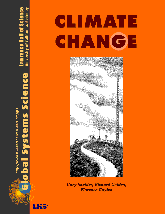TG What Teaching Methods Should I Use?

{ GSS Teacher Guide Index } { All GSS Books }
If the key to effective learning could be summed up in one word, it would probably be “interaction.” Getting your students to discuss the issues, to disagree and challenge each other, to collaborate on laboratory problems, and to help each other in homework activities are all effective ways to increase interaction. The more interaction your students experience in this course, the more likely they will be to think about what they read, to remember it, and to care about what is really happening in and to our world. Following are suggestions for increasing student interactions involving reading assignments and lab activities.

Reading the Student Guides
In order to make the GSS Student Guides accessible to as many students as possible, we have attempted to keep the vocabulary and sentence structure clear and simple, without sacrificing crucial information, concepts, or logical arguments. If your students are average readers, you should be able to give homework assignments of the appropriate length and expect your students to read and think about the materials, and come in to class ready to discuss it.
Example of a book.
We recognize, however, that many students do not have the skills or the motivation to read text materials on their own. In that case, be inventive! Have teams of students work together in class on selected sections of the text, so that they can become the “experts.” Have different teams give oral reports to the class so that everyone is exposed to the various ideas, but the students do not have to read it all on their own. You could present some of the material in the form of lectures, discussions, and dramatizations or through some of the supplementary activities presented in the Teacher’s Guide.
If, on the other hand, your students are independent learners, with excellent reading and research skills, you may want to assign these materials as resources to be used for independent study, or by teams of students. You can require the students to obtain further information on their own, using the bibliographies at the end of each part of the Teacher’s Guide as starting points.
The variety of ways in which you can use the GSS materials to construct a course appropriate for your students may be constrained by your personal situation; but it is limited only by your imagination.
Evelyn Bradshaw from Cleveland Heights High School in Cleveland Heights, Ohio, suggests that a reading assignment can be cut into paragraphs. The scrambled paragraphs can then be given to individuals or groups of students. The students must figure out the order of the reading, and in doing so, learn the meaning of the assignment more thoroughly.

Planning Lab Activities/ Investigations
What to do about misconceptions
A common misconception is that “the hole in the ozone layer causes global warming.” If you hear students express such ideas, you can learn much more about their thinking (and be in a better position to help them) if you do not immediately tell them this is wrong, but instead ask them what they mean by their statement.
By asking students probing questions, you get them to think more deeply about their own understanding of the world. For example, one student explained that he thought the “hole in the ozone layer” was a physical hole in some sort of transparent membrane. Ozone, in his view, was literally a sheet of plastic that enclosed the whole Earth. When he expressed this idea, he realized that it didn’t sound entirely reasonable, and he was therefore open to the idea of the ozone layer as a concentration of a kind of gas, and the “hole” as an area where there was less gas than normal. It was necessary for this student to find the problem with his previous understanding of the atmosphere—to unravel his misconception—before he could begin to understand what was meant by the metaphorical “hole” in the ozone “layer.”
In general, whenever you discover misconceptions, ask your students to clarify what they mean, and then ask other students if they agree or if they have some other idea. Once several students have expressed their opinions, try to summarize the different points of view, write these different ideas on butcher paper or on the chalkboard, and tell the students that you’ll get back to it later.
The next day, many students may have read the text more thoroughly and be able to point out misconceptions in the previous day’s discussion. In other cases, you will need to help them sort out fact from fiction. But however you do it, you will need to help your students identify and unravel their previous misconceptions, and not expect them to learn a new concept without reference to their previous understanding.
In Summary
This Teacher’s Guide is intended to be used as a resource rather than a prescription. Just as there is no “average” group of students, there is no ideal way to teach this course. You are encouraged to use what you find reasonable and useful in this Guide, and to invent your own methods for increasing student interaction.
Note: At the time GSS was developed, the constructivist approach to teaching science discussed on this page, and the assessment methods described on the next few pages, were well phrased in National Science Education Standards.
